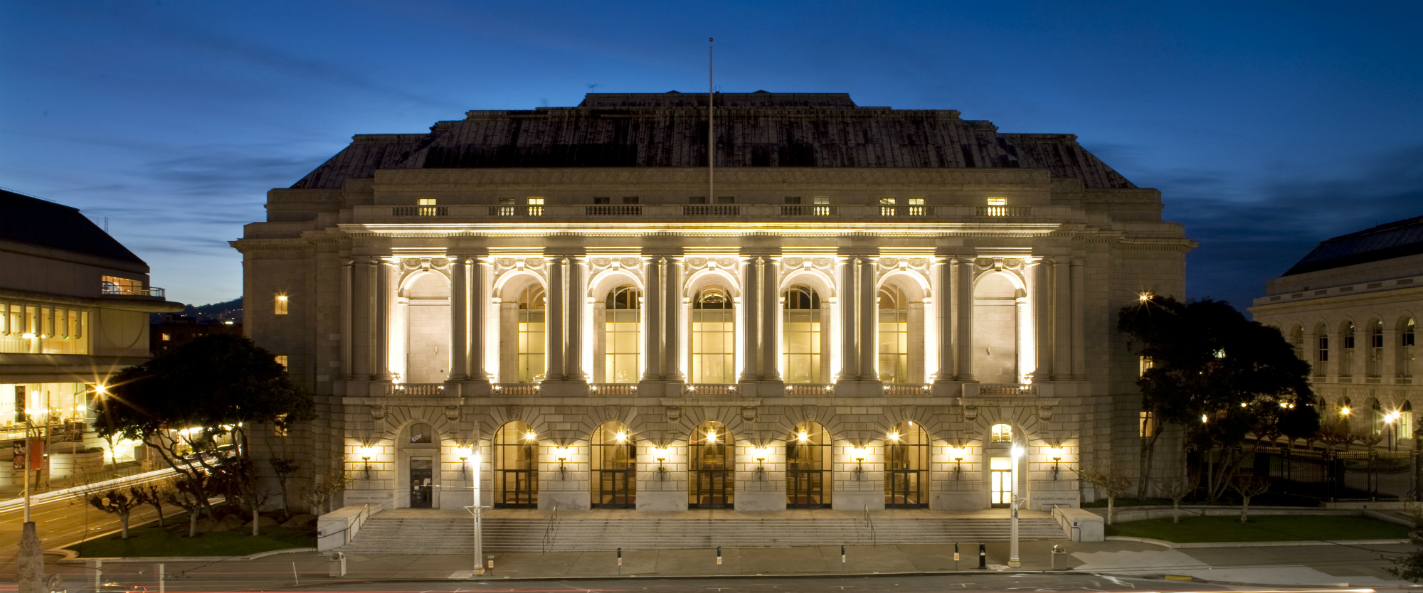

There are also adjustable fabric banners around the auditorium which change reverberation time from 1 to 2 1/2 seconds.Īnother main feature of the hall is that the interior is split into seperate buildings. Above the stage are convex acrylic reflecting panels that are movable and means the acoustics can be modified to suit the orchestra and audience. The acoustical architecture of the concert hall has several features, as well as modifications made after the initial construction to improve it’s result. The design of the concert hall has been praised both for it’s exterior and interior. The hall was designed by Skidmore, Owings & Merrill and Pietro Belluschi, with acoustic consultants Bolt, Beranek and Newman.
WAR MEMORIAL OPERA HOUSE MAPS FULL
Part of the San Francisco War Memorial and Performing Arts Center and built in 1980, you can enjoy an all year round schedule of classical concerts and other events.Ĭlick here to get tickets and see the concert schedule at Davies Symphony Hall.īefore the hall was built the San Francisco Symphony performed at the War Memorial Opera House which they shared with the San Francisco Opera and San Francisco Ballet, however once Davies Symphony Hall was built it allowed the Symphony to have a full calender of performances. Davies Symphony Hall is the permanent home of the San Francisco Symphony and has 2,743 seats. Though these Vietnam War photos have not yet pierced the public consciousness in the same way that civilian photojournalists' images have, the historical record is truly not complete without them.The Louise M. These Vietnam War photos are a key part of understanding soldiers' experiences during the conflict and provide insight into operational specifics that were unknown to the press. They place as much emphasis on the thrill and terror of combat as they do on the agonizing waiting periods that fall between the action. Though the images rarely focus on the carnage of war, they offer surprisingly frank depictions of search-and-destroy missions and prisoner-of-war camps. It is neither a gritty, unfiltered depiction of combat nor a highly censored attempt to make Americans look honorable. The result is an extensive and nuanced body of work. Instead, military photographers were often simply told to "go find some action," and were allowed to use their discretion when it came to documenting things like violence and gore. In interviews, Vietnam War-era military photographers have revealed that they do not recall being told to depict any subjects in a way that favored the U.S. However, the fact that these Vietnam War photos were not intended for publication suggests that photographic units and their commanders perhaps had less incentive to misrepresent or sanitize American military actions in conflict zones. When acknowledged in popular media, however, military photography is often written off as a public relations mouthpiece for the U.S. They were created to document operations, equipment, and people, as well as to create a visual record of the conflict. The United States military has had designated photographic units since the Signal Corps began taking photographs in the 1880s.

This pattern is not unique to the Vietnam War. In the rare cases where they were published or broadcast, the photographers were rarely credited. Though their works have been declassified over time and physical copies are carefully preserved at the National Archives in College Park, Maryland, it is estimated that less than a quarter of military images from Vietnam were ever made available to the press. Given how large the canon of Vietnam War photojournalism is and the level of infamy much of it has achieved, it may be surprising to learn that a wellspring of Vietnam War photos from a source other than photojournalists has been largely ignored: the works of military photographers. Shocking images such as Nick Ut's "Napalm Girl" and Eddie Adams' "Saigon Execution" have become synonymous with the widespread outrage and disapproval of the war in the United States. Photographs, and visual media generally, play an especially important role in this process of shaping collective memory of an event.ĭuring the Vietnam War, for example, photographs and footage brought the conflict home to the American people. Necessarily, more is lost to time than is remembered. In reality, it is a collection of ideas, images, and information that enough people have chosen to preserve and disseminate.


 0 kommentar(er)
0 kommentar(er)
